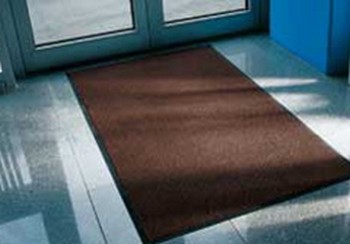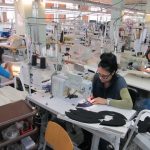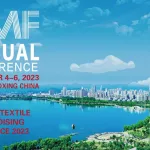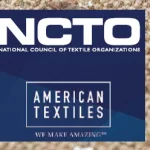Sustainability is becoming increasingly important in the textiles supply chain. Since Texcare 2012 (Frankfurt/Main) it is stretching out its fingers into the dirt trapping mat industry, too. For the first time Milliken from Manchester and Austria based Kleen-Tex Industries presented product ranges with piles made from recycled polyester and nylon fibres.
The European textile floor-covering industry has long since had big demand for polyamide fibres such as PA 6 and PA 6.6. The annual production of carpets, dirt trapping mats and flooring in Europe is estimated at one billion square meters per year which complies with the same amount of waste.
It is said that the disposal quantity of carpets reaches almost 1.6 million tons per year in Europe of which almost 80% is composed of carpet tiles made from nylon fibres – mostly PA 6 and PA 6.6.
Customers are willing to pay a premium for the carpet, and recycling material can help save money compared to making entirely new carpet. Read Shaw Industries’ Profile
 Leave dirt at the door
Leave dirt at the door
Designed as a superior dust control barrier, Milliken’s Obex® Matting Solution offers unparalleled protection against the dirt and moisture that pedestrians can track into a building. Want to stop up to 80% of dust, dirt and moisture brought into a building within the first 10 to 30 feet? Try Milliken’s 3-part system designed especially for high-traffic areas that includes :
-
- Prior™ heavy-duty scraper modular tile – the first line of defense against outdoor dirt and grime
-
- Forma™ for interior entryways?
-
- Atrium Plus™ textile mats and runners for high circulation areas
Obex products come in variety of fully coordinated, contemporary colors and a five-year guarantee.
Since the mid-1970s polyamide fibres have played an important role in the business of portable dirt trapping mats, too. The synthetic fibre provides strength, hard-wearing properties, rot and bacteria resistance. Solution dyed polyamide types are also available, offering good fastness against light and industrial laundering. The backing of these mats normally consists of micro perforated nitrile rubber.

Wash-Horse® from Kleen-Tex International
Wash-Horse is the best solution in problem areas, in which big amounts of damp dirt come into the building. Whether in industry- or trade businesses or in public buildings, the Wash-Horse is an ideal barrier against wetness and damp soil which provides more safety. The 100% natural cotton fibers in the mat insures that though oil and grease found in industrial and production businesses, installation halls and workshops are kept away from other rooms.
Despite of the large quantity of recyclable fibres, textile floor-covering in Europe went the classical way of waste for a long time: the majority was sent to municipal waste combustors or landfill, a minor part was shipped to waste-to-energy plants. Very little was down cycled by other industries such as the concrete manufacturing where waste carpets replace fossil combustible material.
Yet, caprolactam, the basic chemistry of nylon fibres, has long been known for its limited availability. As polyamide fibres allow a closed-loop recycling process which results in fibres that are indistinguishable from virgin PA 6 and PA 6.6, the awareness to reusing an important resource was being raised in Europe in the mid-1990s when an extensive research project was launched in the carpet industry.
Polyamide fibre chains can be depolymerised and broken down into the main building block caprolactam. It can be reused for the manufacturing of polyamide fibres but mainly becomes blended with virgin caprolactam. These fibres are said to match the mechanical and physical performance of similar commercial grades.
Caprolactam that was processed through a nylon recycling facility has an ecological impact, too: US fibre mills claim that the manufacturing of PA 6 requires 40% less energy while the energy consumption for PA 6.6 is 18% less than fibres made exclusively with virgin caprolactam.
The water consumption is 15% less, organic waste can be reduced severely and usage of crude oil is shaved off one ton per each ton of recycled polyamide fibres. Nonetheless, mats for very long have not been known to be made from recycled polyamide fibres.
Yet, sustainability is a major topic in the textile rental service and creates needs for eco-friendly dirt trapping mats.
Milliken, one of the key players in the ‘walk-off-mat’ business, has set up a project regarding the use of 100% recycled polyamide to produce a full range of solution dyed mats with total compatibility with the existing product line in terms of aesthetics and performance. At 2012´s Texcare show in Frankfurt/Main the company presented its first mat with Econyl (Aquafil USA) pile which is made from post-consumer and post-industrial waste.
Kufstein based Kleen-Tex Industries is another supplier of dirt trapping mats. The company followed the path of sustainability, too, but placed emphasis on PET bottles which were transformed into fibres. Green-Horse mats consist of 25 bottles per square meter of solution-dyed mat fabric and come in a colour range of smokey black, black, smokey grey and red. They are suitable for laundering and drying at 60°C.





